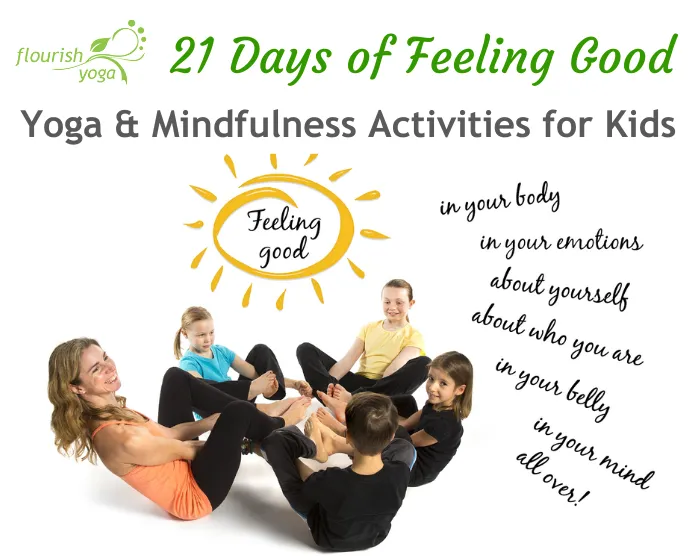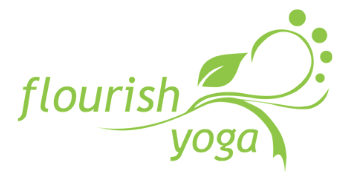Kids Yoga Activities
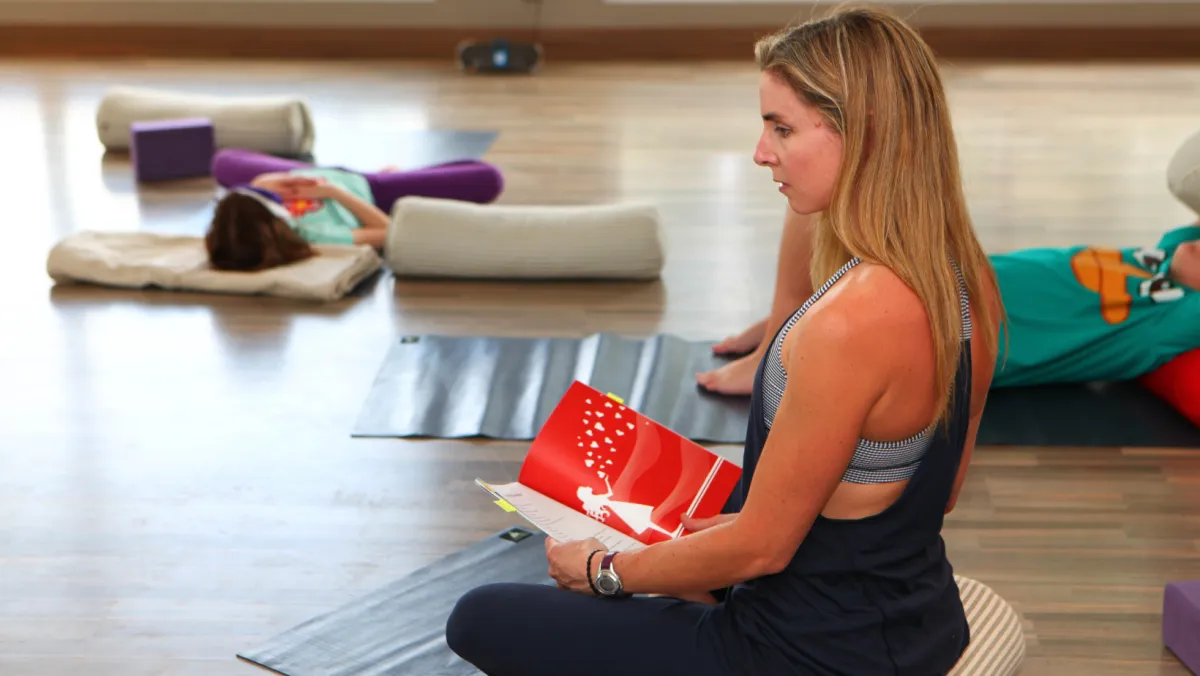
Yoga and mindfulness for kids.
Calming tools for kids to use for classroom yoga breaks and transition routines
in classrooms and at home.
Check out the guided meditation for kids,
kids yoga lesson plans and yoga games and activities for all ages.
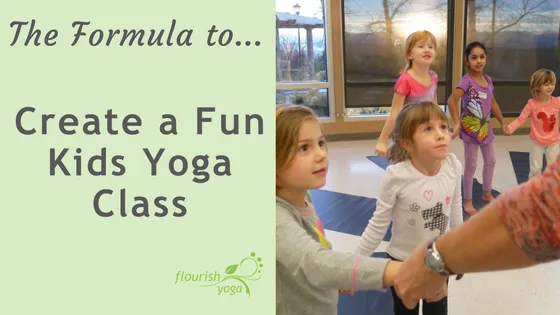
Sequencing a Kids Yoga Class that Works
A question I often receive from my kids yoga teacher training participants; as well as classroom and physical education teachers; is how to manage the different energy levels of kids that enter our class? What is the key to creating kids yoga class that works; with everyone engaging together?
Some days it may feel like they don’t engage or are too tired to try. Others, they cannot get their balance or coordination working. And others, they are so wound up that lying still for even a moment in Savasana is asking too much.
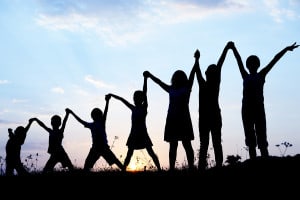
While we honour the spirit within each child and love to foster their creativity we also want them to benefit physically and mentally from yoga; ideally experiencing a sense of calm before they leave. We want to offer them a class that is safe, that will stimulate, encourage, stretch and calm them.
When I started teaching kids I was also completing my adult teacher training in Iyengar yoga; which is often known as being very rigid in it’s structure and approach to yoga. While giving kids a classic “Iyengar” class experience would definitely turn them off yoga, the science behind their sequencing provides an excellent framework for an effective energy flow within a class.
This is how I started to sequence my kids yoga classes and I found it worked really well. To this day, I still follow a basic Iyengar style sequence with my classes – although with experience I do allow myself to colour outside the lines occasionally. Kids are naturally more flexible and less rigid in their expectations so we don’t have to be as restricted by the “rules”. However, following this general formula below helps manage the energetic flow and creates success in the class.
Formula for Creating Kids Yoga Class that Works
A consistent start to classes helps students develop an understanding of what to expect in class.
Breathing: Start with a couple breathing poses to get centered. Introduce the theme for the class and go over the class pledge.
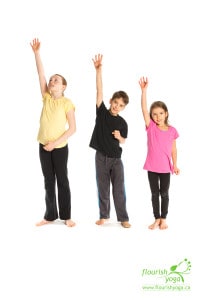
Energizing: Following this, introduce Sun Salutations and energetic poses. Such as Reach for the Sun, Freeze and Flow (works well to expend any extra energy), Ladder Climbing and Punching Bag. Try poses to incorporate crossing the mid-line. This gets the brain connections firing and the body warmed up so it’s safe to stretch.
Standing and Balance: Now that the students blood is flowing, and they have expelled some of the sillies, progress to standing poses and standing balance poses.
The standing poses help to ground and feel connected to our bodies. They develop coordination, body and special awareness, plus they also serve to bring heat and energy up in the body again. This makes it safe for poses where we are stretching muscles such as backbends, twists and forward bends.
Backbends: Now that the body is warmed up, progress to backbends and heart openers. Backbends start to move and increase the flow of energy in the body. Heart openers open the body physically and mentally; so be prepared for they will release emotions such as laughter, talking or perhaps even tears. Let it flow, let it emerge that is what is intended. When this does occur, Crocodile Pose is good to rest in afterwards to settle and soothe those emotions.
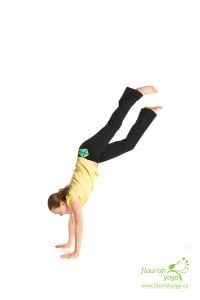
Inversions: Inversions can be done before or after backbends. When they are placed after, the shoulders and heart are more open and able to support the body. This is more of an issue for tweens and teens than for younger kids. Depending on your age group will determine the best placement for these poses.
These inversion poses may include longer holds in Down Doggity Dog, Bear or Dinosaur walking, or Donkey Kicks. For experienced and older students you may progress to forearm balances, handstands and Monkey or Teddy Bear stands.
*Be careful that students do not place weight or pressure on the neck vertebrae before they have the core strength, body awareness and capability to support challenging inversions such as headstands.
Twists: Next move onto Twists. This helps switch gears from the active and energizing types of poses to more quieter reflective poses. This allows the kids to connect again with the flow of their breath and start to move a little slower.
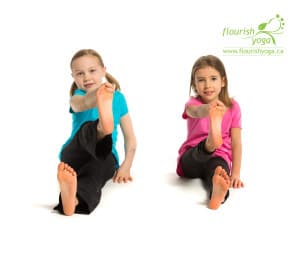
Forward bends: Next go into Forward bends which calm the system. Hinging the body at the waist and tucking the chin down towards the chest serve to stimulate the Vagus nerve, which relates to the parasympathetic nervous system, cooling and quieting the body. This inward action begins to shift the body into a more reflective frame of mind. I have found these poses are like magic if you have a particularly excited group. Taking them through several forward bend variations, gradually holding them longer will bring their energy down and make their relaxation session much deeper.
Shoulderstands: Shoulderstands are a type of inversion that are traditionally at the end of class an adult class just before Savasana. I have noticed though that shoulderstands tend not to be very quieting for kids. My experience has been that shoulderstands or Candle Pose often winds kids up, so you may want to include these in the inversion section instead. That being said, it is nice imagery to have candles or lighthouses at the end of your story or journey, so I may place it at the end of a class and hope for peace, knowing they may require a bit longer to settle in their relaxation pose. For example, the Bridge variation of a shoulderstand is a quieter variation that still works well near the end.
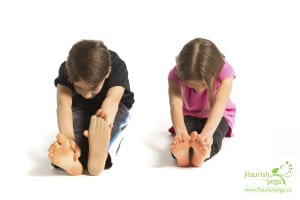
Relaxation: Relaxation pose is essentially what we are leading up to through the other poses. Stretching and engaging the body so that when we lie still and let go the body can completely relax. With kids being in such an active stage of growth, lying still is really hard. Some kids may feel vulnerable on their backs so allow the option to lie on their belly or side. You will find over time this ability to be still will grow, so start shorter with success then gradually lengthen the experience. Relate your guided visualization to the class and possibly into a creative exercise afterwards. You may find that giving kids the opportunity to draw, colour or create becomes the meditative part of the class.
Sometimes I make exceptions and add in poses not following this sequence to fit with the story I’m using. This is fine especially if you are aware of how your change may affect the energy so you can counter it later. It’s ok to bring kids up and down just remember to add in a few extra quieting poses at the end to help them relax deeper.
Here’s the short form of the recipe for creating kids yoga class that works with a few associated YogaKids poses for examples:
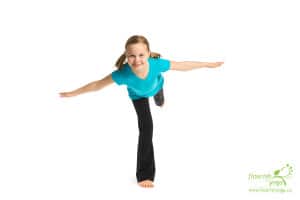
Breathing: Take 5 Breath, Peace Breath, Balloon Breath
Energizing: Shake Like Jelly, Ladder Climbing, Reverse Hand to Foot, Shine Bright Sun Salutations, Volcano
Standing & Balance: Warrior Series, Om a Little Teapot, Flamingo
Backbends: Dromedary Delight, Rocking Horse, Wheel
Inversions: Down Diggity Dog, Donkey Kicks, Spouting Dolphin
Twists: Sit and Twist, Deer Pose, 360 Owl, Twist and Blow
Forward Bends: Peanut Butter & Jelly, Bow and Arrow, Polar Bear, Turtle
Relaxation: Lemon Toes, Magic Cloud Carpet Ride
I would love to hear if incorporating this recipe helps your experience with kids and what works for you. Comment below on your experiences or if you have a different recipe that works.
Create a habit of feeling good in the classroom and at home.
Get 21 days of yoga lesson plans and
calming activities for kids.
Fun and simple kids yoga activities
you'll use over and over
to keep you (and your kids)…
feeling good all over!
